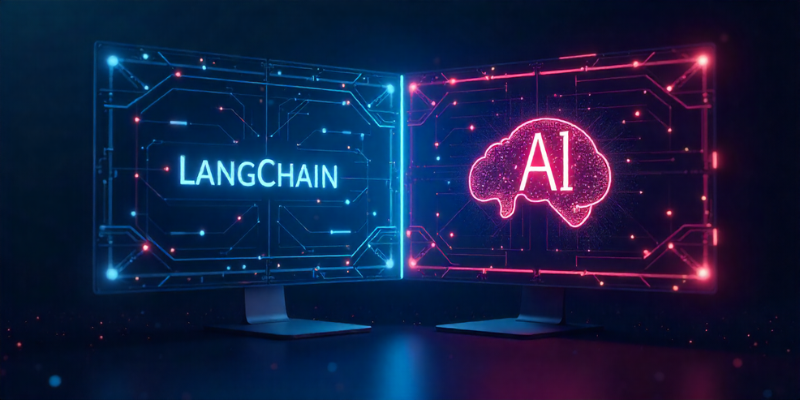LangGraph: The Engine Powering Decision-Making in Autonomous AI Agents
The future of Artificial Intelligence lies in Autonomous Agents: systems capable of reasoning, planning, and executing complex tasks without continuous human intervention. However, the key to truly intelligent behavior is not just in the Language Models (LLMs) themselves, but in how their decisions are orchestrated. This is where LangGraph positions itself as an executive and indispensable tool.
The Limitation of the Linear Sequence
Traditionally, AI architectures have relied on linear workflows or "chains," where each step follows the previous one in a predetermined fashion. While functional for simple tasks, this approach collapses when faced with the need for dynamic reasoning, feedback loops, or the ability to try one path, fail, and choose an alternative. Autonomous agents demand flexibility.
LangGraph: Graph Architecture for Reasoning
LangGraph, an advanced extension of LangChain, solves this challenge by introducing a State Graph structure. Instead of a fixed sequence, workflows are defined as a diagram of nodes and edges:
- Nodes: Represent functions, model calls, or tools (APIs, databases).
- Edges: Define the transition from one node to another, crucially, allowing for conditions and loops.
This cyclical topology is the essence of autonomy. It allows an agent to:
- Iterate and Correct: Revisit a previous step to refine an answer or attempt a different tool if the initial result is unsatisfactory (a ReAct style loop).
- Conditional Branching: Make complex "if-then" decisions, routing execution to specialized paths based on the context or the result of a query (e.g., searching the web only if the information is not in the initial context).
- Maintain State: The shared state architecture ensures the agent remembers the conversation progress or intermediate results across multiple reasoning steps.
For organizations, this translates into reliability and control in their AI deployments. LangGraph not only allows for building smarter agents (like support assistants that escalate issues or AI that tests and fixes code), but it also offers a clear control plane for auditing and debugging. By visualizing the decision flow as a graph, developers and executives can ensure agents operate within defined boundaries and policies, moving Autonomous AI from concept to robust, predictable production.
At Tismo, we help enterprises harness the power of AI agents to enhance their business operations. Our solutions use large language models (LLMs) and generative AI to build applications that connect seamlessly to organizational data, accelerating digital transformation initiatives.
To learn more about how Tismo can support your AI journey, visit https://tismo.ai.
You May Also Like
These Related Stories
.png)
LangChain Framework: How It Works and Why It Matters

LangChain vs. Traditional AI Frameworks
.png)
.png?width=100&height=50&name=Tismo%20Logo%20Definitivo-01%20(2).png)

.png?width=800&height=400&name=Blogs%20Preview%20(6).png)
.png?width=800&height=400&name=Blogs%20Preview%20(41).png)


